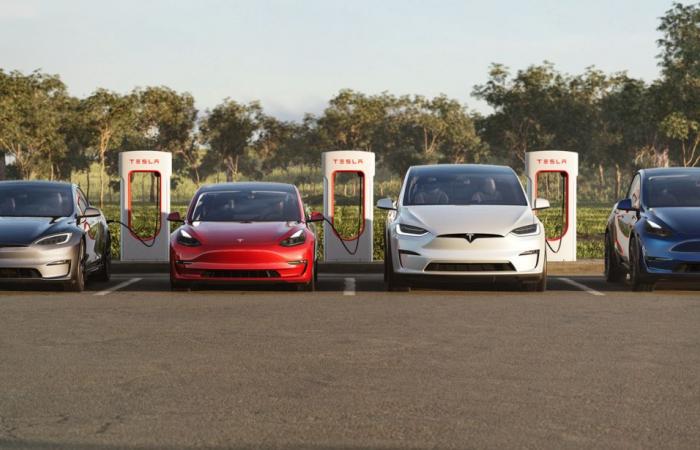This disruptive car company has made its early investors huge returns.
Tesla (TSLA -8.45%) has become such a highly regarded business that it’s included in the exclusive “Magnificent Seven” grouping, which consists of some of the most dominant and innovative companies the world has ever seen. But while shares have skyrocketed 1,070% in the past decade, they have disappointed investors in the past three years.
Nonetheless, this top electric vehicle (EV) stock is probably still on the radars of a lot of investors out there. Is Tesla a smart buy? To get to a final answer, let’s consider both the bull and bear cases for the business.
Tesla bull case
Tesla deserves credit for disrupting the auto industry. Grounded on the belief that the world needs to reduce carbon emissions, the company introduced popular EVs to customers across the globe. And this spurred heavy investments in research and development among legacy car companies.
Tesla has a significant 50% share of the U.S. EV market. And it now sells a suite of five passenger vehicles, with a lower-cost model on the way next year.
One way to tell whether a company is of high quality is to figure out whether there’s an economic moat or durable competitive advantages that support better financial performance. It’s easy to argue that Tesla fits the bill here.
First of all, its brand has tremendous value. As has historically been the case, Tesla has been able to charge premium prices for its EVs (more on this below), leading to consistent positive earnings starting in 2020.
Cost advantages in Tesla’s manufacturing process have also supported this bottom-line performance. The business is able to produce and sell cars profitably, something many of its rivals can’t say.
Automotive revenue made up 78% of Tesla’s sales base in Q2. However, the bulls hope that Tesla’s business will look different over the long term. The company has been working on developing the capabilities of its AI Dojo supercomputer to finally introduce full self-driving technology, which could result in Tesla launching a robotaxi service that could seriously boost its financial prospects.
Tesla bear case
One of the most obvious factors the Tesla naysayers will point to is the company’s growth slowdown. While investors got used to the business posting monster double-digit yearly sales gains in years past, things have taken a turn for the worse.
In the last two quarters of 2023, Tesla reported single-digit revenue growth. In Q1 of this year, that figure turned negative before rising just over 2% in the second quarter.
Industry executives blame softer-than-expected demand for EVs. Higher interest rates make financing a new car purchase more expensive, so it makes sense why consumers are pulling back. Besides price, driving range anxiety and a belief that there aren’t enough charging stations are still top factors that discourage an EV purchase.
Tesla’s ascent resembled a hyper-growth software enterprise. But now, the business looks like a typical automaker. It can’t escape the extreme competition from both domestic and international rivals. Tesla has implemented numerous price cuts to support demand for its cars in this economic environment.
Declining sales and pricing pressure have also profoundly impacted the income statement. Tesla’s Q2 2024 gross margin and operating margin were meaningfully lower than in the same period of 2022.
Even though the stock trades 44% off its peak price, it’s still expensive at a price-to-earnings ratio of 62. This makes Tesla the most expensive of the “Magnificent Seven” stocks despite the company probably performing the worst from a fundamental perspective.
Tesla has done a great job compounding shareholder capital in the past decade. But I find the bull arguments more compelling. And that’s why I don’t believe it’s a good time to buy the stock.






